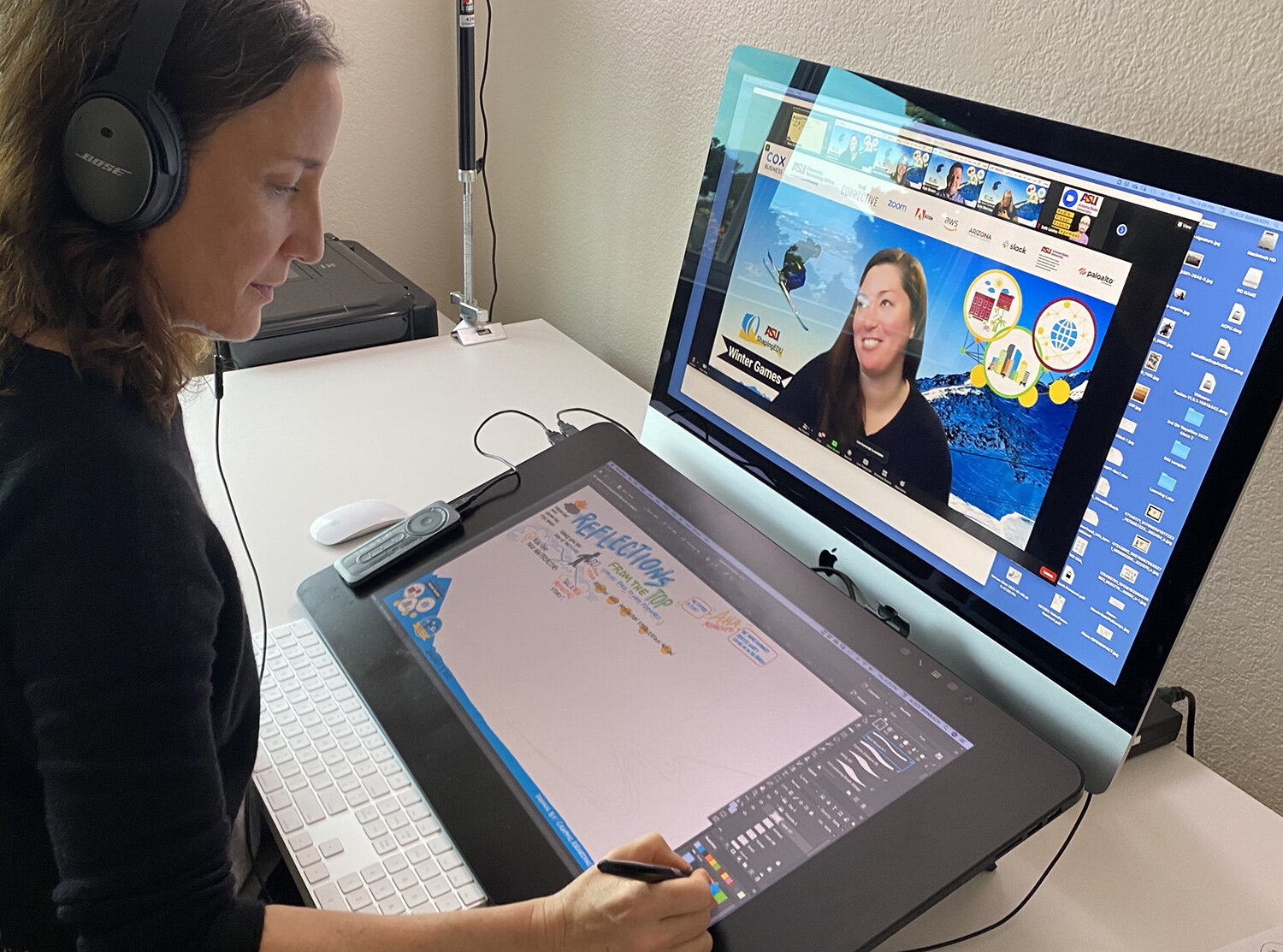Ready To Hire A Graphic Recorder? Remember These Best Practices.
Best practices have been a work in progress this past year for many of us who found ourselves suddenly working virtually. Below are six key insights I've learned that help virtual meetings with graphic recorders go more smoothly.
1. Contracts are a must. Outlining the description of services, dates and times of sessions, fees, and expected deliverables keeps everyone on the same page.
2. Communication is key. Schedule a pre-event briefing and agenda review call at least ten days before the event. This is the client's opportunity to talk to the graphic recorder about their company, event, objectives, and goals for the graphic recording.Choose one way to communicate during the session; text, chat, email are all fine, but pick just one so the graphic recorder won't have to look at multiple things while also listening and drawing.
3. Tech checks are critical. It's helpful to have one tech check a week before the event, and another one the day of. There are multiple ways the graphic recording can be shared, and this is a great time to choose which is best for your event. The illustration can be live streamed, screen shared at key intervals, or sent after the event is concluded.
4. Smooth access is essential. Make sure the graphic recorder has everything they need to access the session well before the day of the event.
Once on the job:
5. Introductions count. Be sure the graphic recorder is introduced at the start of the meeting. When they aren’t, they become a distraction. It’s best to let them introduce themselves since they can explain what they do more succinctly than anyone else.
6. Flexibility is the name of the game. Keep open communication, be ready to make changes on the fly, and extend grace to yourself and others.
Why is graphic recording useful at your next event?
It’s the ultimate show-and-tell! It links the words you hear with a synthesis of what they mean, leading to, you guessed it: better retention, engagement, and comprehension.
Above: Alece Birnbach live graphic recording a session for ASU Winter Games Virtual Conference.

